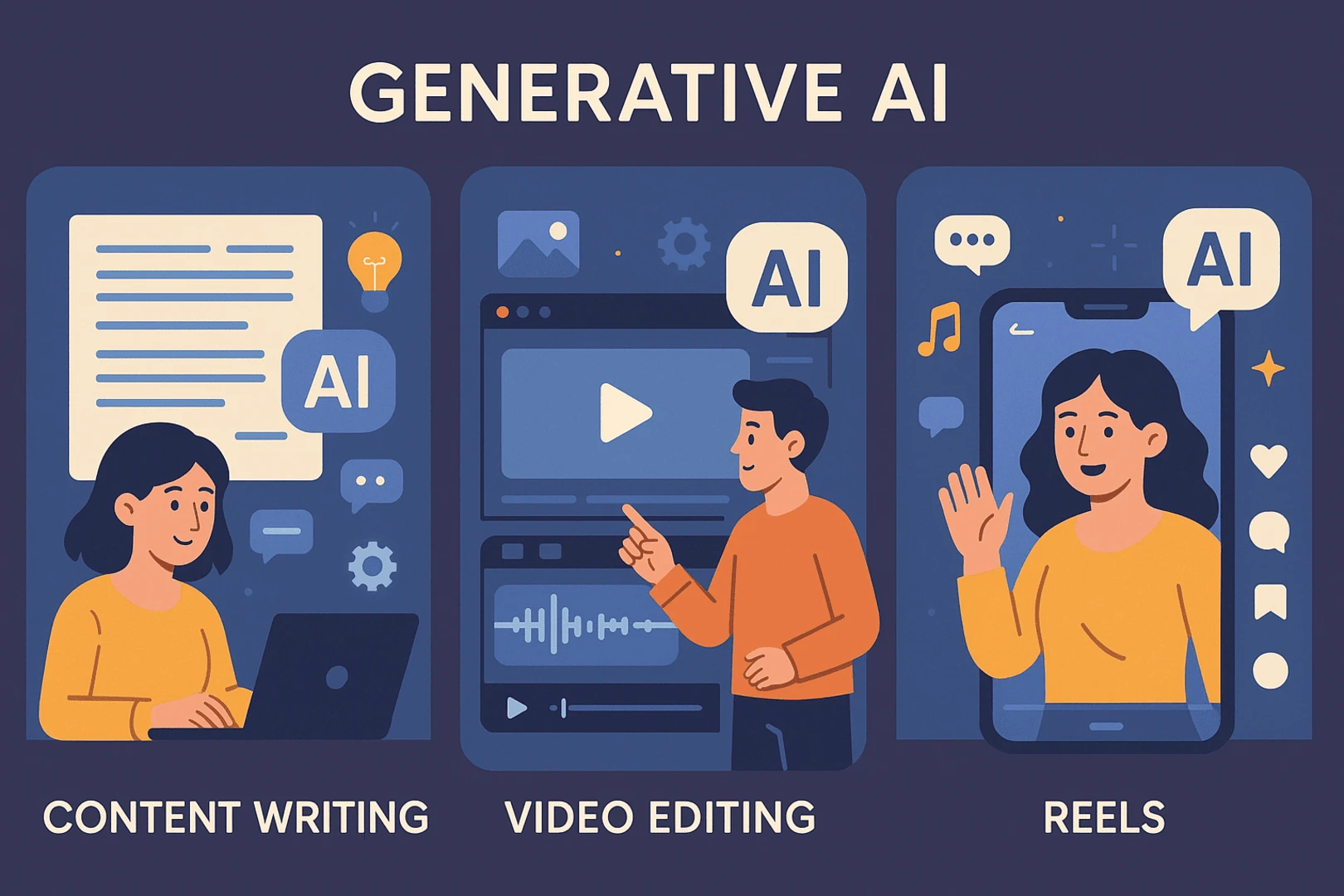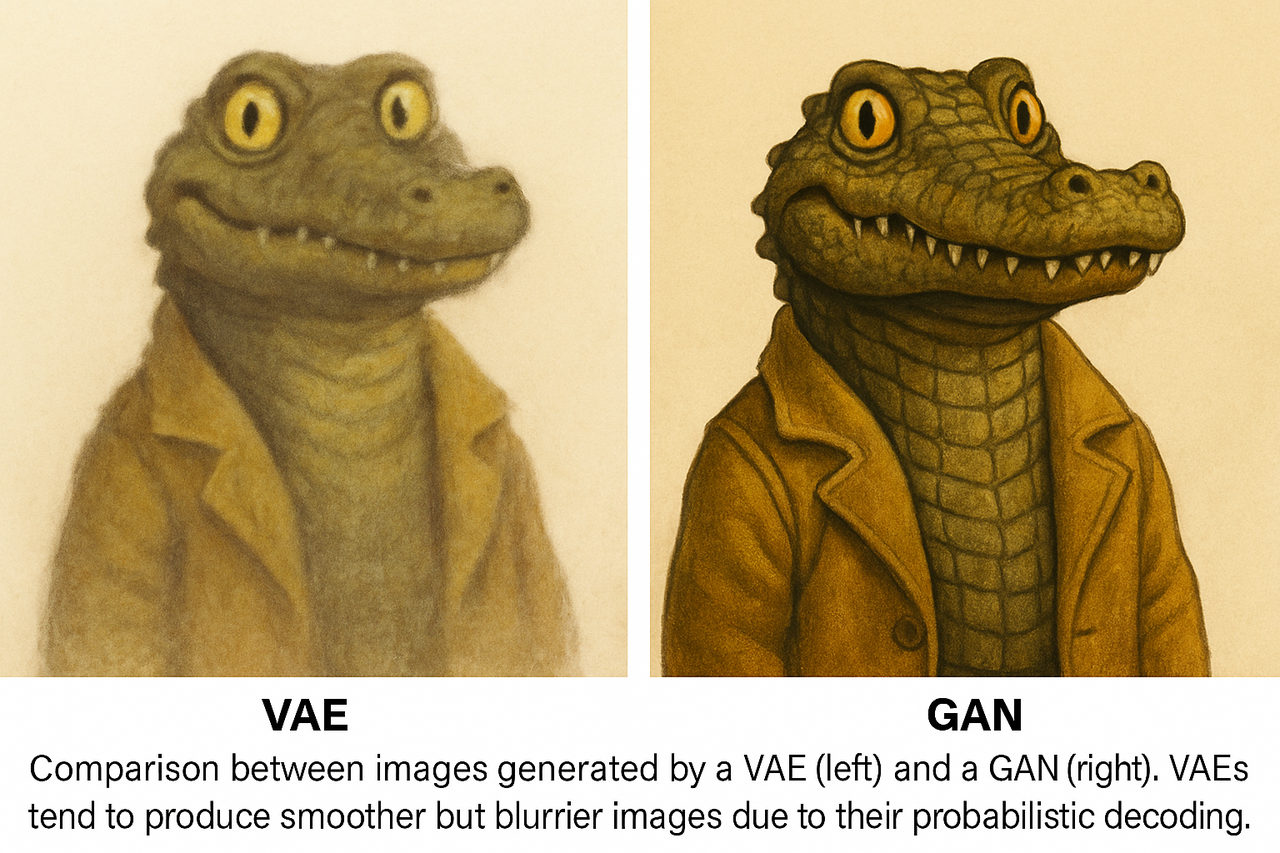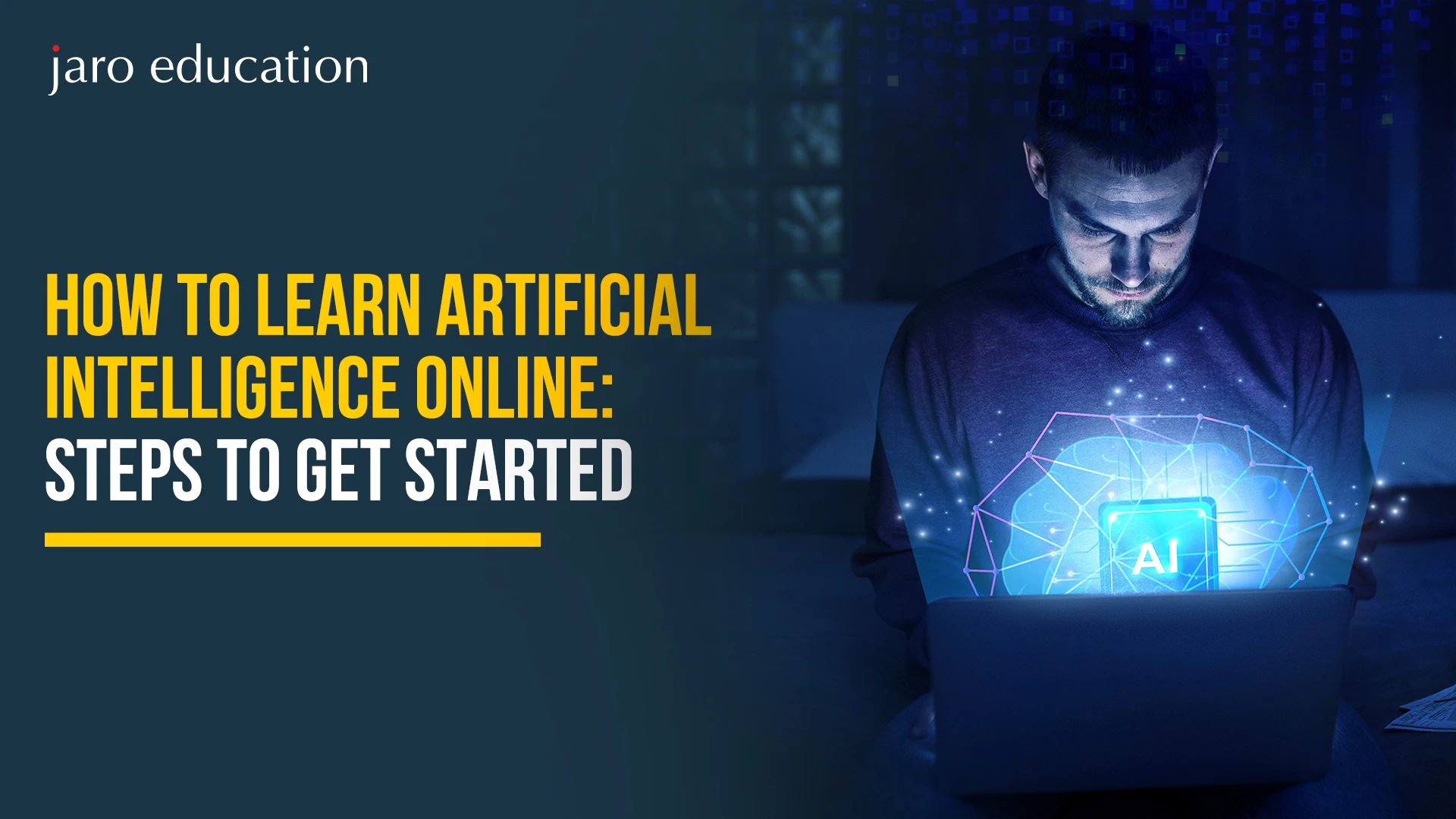Generative AI: Revolutionizing Content, Video, and Image Creation in 2025
Table of Contents

Generative AI is at the forefront of shaping the process of creating, consuming, and interacting with content in this fast-paced digital era, meaning that we have moved from being merely consumers to being creators of an exclusive Generative AI application. From writing compelling blogs to generating hd images, generative AI showcases its versatility across creative domains. Moreover, it has the ability to edit short-form videos. Therefore, it’s a transformative paradigm shaping the future of digital content.

In this blog, a detailed look will be taken at what generative AI is and how it is used for writing content, creating images, and video editing, among other functions, alongside the best generative AI tools for great Generative AI applications and the future that generative AI holds for creators and businesses.
What is Generative AI?
Generative AI is a tool that creates and modifies previous content or new content according to the input. Traditional AI works on analyzing or classifying data; on the other hand, generative AI can now create text, images, code, audio, and videos.
To achieve these impressive results, generative AI relies on advanced machine learning models such as transformers, GANs (Generative Adversarial Networks), and diffusion models. These models are trained on huge data sets and often output the kind of results that the genuine human mind would consider creative and logical.
Example:
- Generating human-like answers from ChatGPT.
- Creating images from text with DALL·E.
- Sora (by OpenAI) creates videos from text descriptions.
Content-writing Generative AI
This stands on one of the more famous Generative AI applications for setting content generation on autopilot. Irrespective of whether the content is for blog posts, email marketing campaigns, ringtones, product descriptions, or social media captions, Generative AI tools have been symbolic of marketers and writers.
How It Works:
Generative AI tools like ChatGPT, Jasper, and Writesonic leverage natural language processing (NLP) techniques to interpret prompts and generate meaningful content.
Real-World Examples:
- Blogging: Digital marketing agencies use Jasper to generate SEO blogs weekly.
- E-Commerce: Store owners on Shopify prompt ChatGPT for the mass creation of product descriptions.
- Newsletters: Startups use AI to create catchy newsletters tailored toward user behavior.
The best AI writing generators at a glance
Tool | Generative AI Applications | Fee Structure |
ChatGPT | General writing, Q&A, coding, email drafting | Free (GPT-3.5); Paid: $20/month for GPT-4 |
Jasper | Marketing copy, SEO blogs, brand voice content | Starts at $49/month (7-day trial) |
Copy.ai | Ads, sales copy, and quick blog generation | Free plan available; Pro: $49/month |
Writesonic | Multi-language content, AI article writing | Free tier; Pro from $19/month |
Benefits:
- Saves time and resources.
- Scaling content creation of blogs, ads, emails, and websites.
- Takes creativity from ideation to tone customization.
Generative AI in Image Creation
With the rise of generative AI, the need to hire a designer for every graphic is quickly becoming a thing of the past. Generative AI can now create high-quality, custom images in seconds.
Use Cases:
- Marketing teams generate ad creatives on demand.
- Fashion designers visualize clothing ideas using AI-generated mockups.
- Interior designers create realistic room layouts from descriptions.
Leverage from VAEs to GANs
Variational Autoencoders (VAEs) are generative AI models that are using deep learning to represent data based on probabilities. In contrast to regular autoencoders, the latent space is interpreted as a distribution in VAEs, somewhat like a prior distribution, making it smooth to interpolate between data. In order to achieve this, the recognition model will generate the mean and the variance so as to construct a probability distribution. It is then that the decoder draws the sample in this space to reconstitute the input.
In addition, VAEs learn using a loss function which requires partaking of the reconstruction error, and yet a KL divergence term, causing this latent space to be structured. VAEs are excellent in denoising, data compression, anomaly detection, but their results tend to be less specific than their GAN counterparts (and particularly, the transformer-based ones). They are however useful in applications such as image creation, pattern recognition as well as facial recognition.
You can also see the difference between VAEs and GANs

*Wikipedia
Generative AI Tools in Action:
- A clothing brand uses Midjourney to produce seasonal lookbooks.
- An Instagram influencer uses DALL·E to create custom backgrounds for photoshoots.
- Etsy sellers generate AI-made illustrations for posters and merchandise.
- Cuts down Generative AI design costs and turnaround time.
- Offers limitless creativity with customization.
- Easy to integrate with design workflows.
Generative AI is being used in Video Editing and Reels
Many people now use short video content, and AIs are simplifying the process for people who create and promote these videos.
Examples of How Tech Is Used:
- With AI, you can now cut, trim, add subtitles, and apply effects to videos all by yourself.
- Change a script into an animated video.
- AI automatically supplies the story with animated voices and appropriate background sounds.
Generative AI Tools:
- Descript lets you change your video in the same easy way as text editing.
- Background removal, motion tracking, and various AI video effects are provided by Runway.
- Pictory helps you make blog posts into videos that people will want to watch.
For Example:
Using Pictory, a fitness coach can create both Instagram Reels and YouTube Shorts versions of weekly workout blogs quickly.
Here is the summary with the generative AI tools:
Use Case | Generative AI Tools | Benefits |
Blog Writing | ChatGPT, Jasper | Fast, SEO-friendly, scalable content |
Image Creation | DALL·E, Midjourney | High-quality graphics in seconds |
Video Editing | Runway, Descript | Edit and create reels with ease |
Applications | Marketing, Education, Healthcare | Versatile and industry-ready |
Future | Sora, Multimodal AI | Real-time collaboration, smarter content |
What Is Expected From Generative AI Going Forward?
Generative AI is helping us change the ways we create material, analyze information and make interactive digital things. We’re barely beginning to explore what it can do. As generative AI continues to evolve, it is poised to revolutionize not just individual industries but also the way we approach creativity and society as a whole.
Furthermore, We will discuss what lies ahead for generative AI and examine leading trends, top achievements and both possible difficulties and ethical issues.
- AI Using Different Sensors Will Soon Help Everyone
At present, generative AI mainly focuses on working with single categories of data: text, images or audio. Looking ahead, experts anticipate the rise of multimodal AI — systems capable of understanding and generating content across multiple formats simultaneously.
Here’s What’s Coming Up:
- Sora, a tool from OpenAI, will likely grow to allow users to describe images and receive whole videos in return.
- Storytelling with movies, music videos, or interactive games is possible by using just a prompt.
- Unified models: All of the writing, illustration, narration, and animation can be done by one AI.
- Live Collaboration Between People and Artificial Intelligence
In the coming years, generative AI is expected to evolve from being just a tool to becoming a true creative partner, collaborating with humans to enhance innovation and expression. AI tools will be able to join with human users in real time to propose solutions, improve existing work, and fill in any missing pieces in the task.
What types of use cases have you built before?
- AI helps authors to revise their story as they write.
- Designers create layouts that AI helps with palette and pattern suggestions.
- Generative sound AI is being used live as musical instruments by musicians.
- Creating Individualized Content and Services
As AI continues to improve its understanding of individual preferences, we can expect a surge in hyper-personalization across products, services, and content. In marketing, education, and healthcare, generative AI will help ensure content is created for every person.
Applications:
- Newsletters that feature only what matters to you, plus learning and advertising content
- Individual healthcare treatment plans
- Music playlists full of tracks that reflect how you’re feeling and what you’re doing.
Conclusion
If you create content by yourself, work for a startup, or work for a big brand, Generative AI is the path forward for content creation. It works efficiently, can be used for any project size, and gives exceptional creative control.
You can make anything from text for a blog post to a quick movie using ChatGPT, Midjourney, Runway, or Pictory.
Given the rapid pace of innovation, it’s crucial to start experimenting with AI now—this will allow you to integrate it into your content strategy and stay ahead of the competition.
Frequently Asked Questions
What is Generative AI?
Generative AI is a type of artificial intelligence that creates new content such as text, images, music, videos, and even code using machine learning models. It works by learning patterns from large datasets and then generating similar but original outputs.
How does Generative AI work?
Generative AI uses models like transformers, GANs (Generative Adversarial Networks), and diffusion models. These models are trained on massive datasets and can generate realistic content by predicting the next likely word, pixel, or note based on context.
What are some popular Generative AI tools?
Popular tools include:
- ChatGPT (text and coding)
- Midjourney (AI art and images)
- DALL·E (image generation from text)
- Runway ML (video editing)
- Jasper (marketing content writing)
- Synthesia (AI-generated video with avatars)
Where is Generative AI used?
Generative AI is used in:
- Content writing and SEO
- Image creation and graphic design
- Video editing and social media reels
- Customer support via chatbots
- Gaming, music, and storytelling
- Healthcare (e.g., report generation, drug discovery)
Is Generative AI safe to use?
Yes, but with caution. While generative AI is powerful, it can sometimes produce biased, misleading, or incorrect content. It’s important to verify outputs, respect copyright laws, and avoid over-reliance on AI for critical decisions.


















